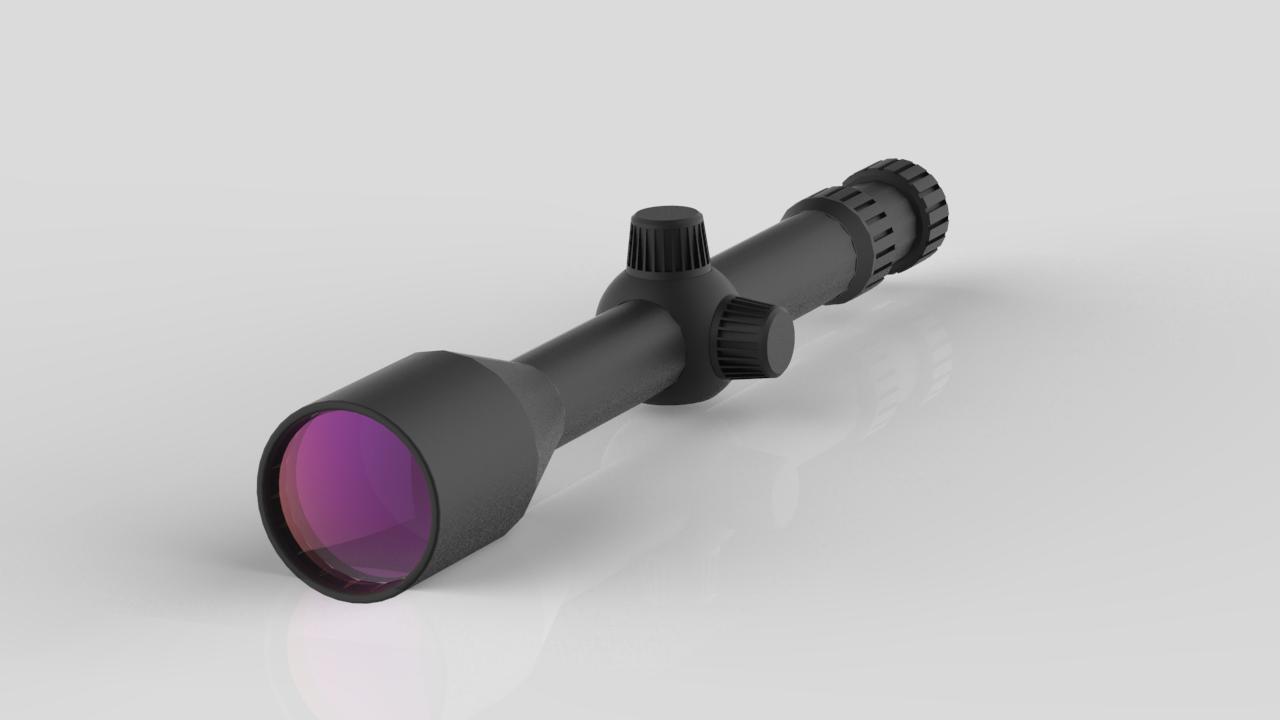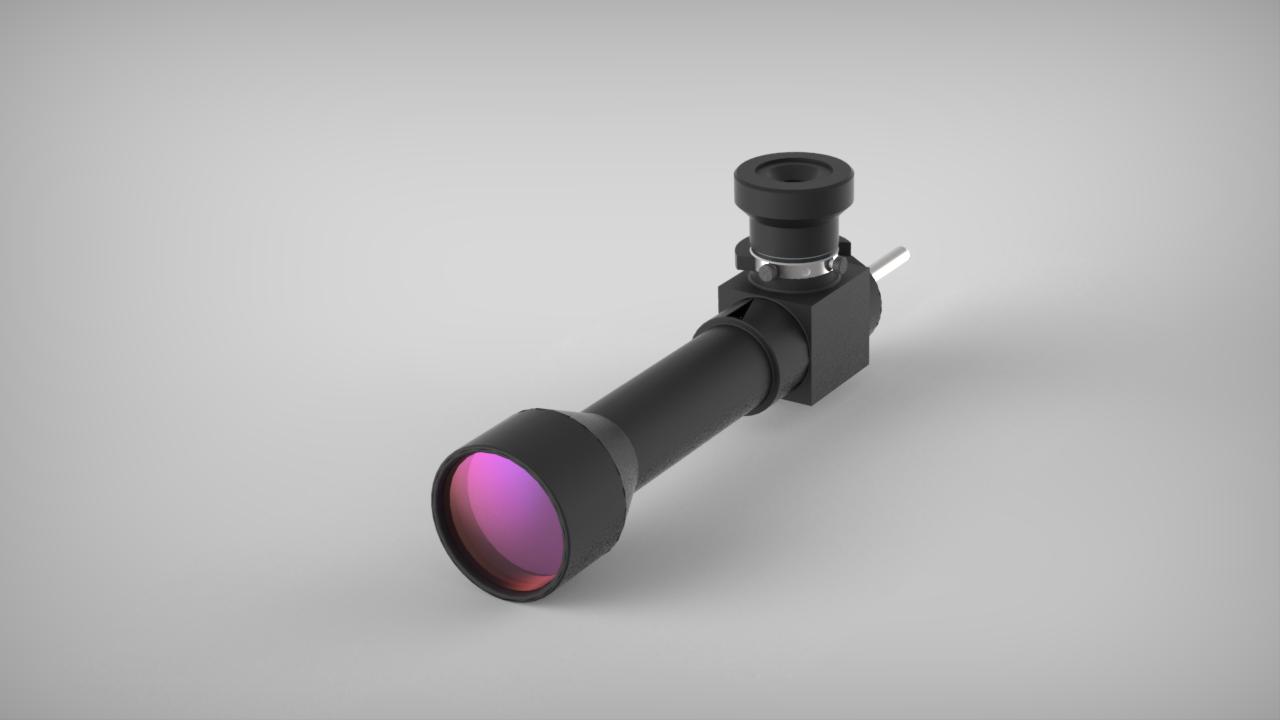Sniper Rifle Scope
A rifle scope is a sighting device based on optical refracting telescope, equipped with graphic image pattern (reticle) optically aligned to give accurate aiming point. The sniper rifle scope is mounted precisely on the firearm.
Light Guide Sniper Rifle Scope provides a variable magnification of 3-12 x 50 which denotes 3-12 times magnification with a 50mm objective lens. The magnification can be varied by manually operating a zoom mechanism with focus ranging 25meters to infinity. Paralax compensation is also provided.
In general terms, larger objective lens diameter, due to their ability to gather larger amounts of light, provide a larger exit pupil and hence provides a brighter image at a eyepiece.
The aiming accuracy depends upon the reticle (cross hair Mil-Dot) pattern provided with coarser or finer Mil-Dot increments. There is a provision for reticle movement, to compensate for windage and bullet drop compensation.
Considering the rifles, for which the sighting system is deployed, suitable eye relief of the order of 100mm is provided. Eye guard prevents stray light entry. The instrument body is constructed using high strength aluminum, with considering the requirement of lower weight and high rigidity .

Muzzle Bore Sight System
Aiming accuracy of a firearm largely depends on the alignment accuracy of muzzle centerline with the sighting gadget used with the firearm. Accurate boresighting ensures ulti mate performance and reliability of the firearm.
Light Guide Sniper Rifle Scope provides a variable magnification of 3-12 x 50 which denotes 3-12 times magnification with a 50mm objective lens. The magnification can be varied by manually operating a zoom mechanism with focus ranging 25meters to infinity. Paralax compensation is also provided.
Light Guide Muzzle Boresight consists of a Sighting Telescope precisely mounted on Caliber Adapter. Sighting scope has a 38mm objective lens that provides optimum light passage with high resolution image in the most offensive conditions. The enhanced 12X magnification is suitable for boresighting upto 1.1km distance for large caliber guns. The mechanical compensator on caliber bar indubitably defines the mechanical centerline of the muzzle. A field adjusting cross wire reti cle allows an accuracy in the range of +/- 0.15 mil. The system has aluminium and stainless steel constructed outer case, nitrogen purged for enhanced field life.
The aiming accuracy depends upon the reticle (cross hair Mil-Dot) pattern provided with coarser or finer Mil-Dot increments. There is a provision for reticle movement, to compensate for windage and bullet drop compensation.
Considering the rifles, for which the sighting system is deployed, suitable eye relief of the order of 100mm is provided. Eye guard prevents stray light entry. The instrument body is constructed using high strength aluminum, with considering the requirement of lower weight and high rigidity .
Specifications
| Magnification | 12x |
| Field of View | 4 Degrees |
| Eye Piece Focussing | +/- 3 Diopters |
| Foot Ring Diameter | 115-125 mm |
| Graticule Pattern | Cross Wire |
| Eye Piece FocussingGraticule Movement | Azimuth & Elevation simultaneously |
| Graticule Line Thickness | 0.1 mil |
| Working Distance | 1.1 KM |

Muzzle Refrence System
Muzzle Refrence system calculates the barrel bend in the muzzel. It is a laser based system with a transmitter and reciver. The transmitted rays fall on MRS mirror mounted on tip of the barrel and reflects it to form a image on reciver. Position sensing devive in a reciver calculates the shift in the image position and thus calculates the barrel bend. It then provides real time correction to the GMS while locking the target.
Receiver's Telescope
Receiver telescope are used to coollect back scattered photons onto a detector. The back scattered signals are be processed to calculate time of flight, or absorbed wavelength or florosence wavelength as the case may be.
Light Guide has deliveres receiver Telescope from aperture size of 100mm to 700mm. These telescopes are cassigeain Telescope with elepsoidal primary mirror, as they usually operate right from near field of 15 meters to infinity. Input Beam is focused onto detector or fiber by moving secondary mirror. The movement may be manual or motorised.
Electro-Optical Assembly
Light Guide intigrates various electro-optical sub assemblies for OEM manufacters. The scope of work consists of fabrication of optics, mechanical and electronics hardware, its intigration and testing of integrated system, as per OEM'S requirements.



